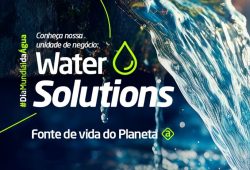Worker Safety and Health

By Equipe de Redação
Posted in December 5, 2022

Are you familiar with NR 34? Learn all about the key points of this regulatory standard.
Each regulatory standard addresses the preservation of worker safety and health.
Among them, NR 34 specifically sets out the minimum requirements and protective measures for safety, health, and the work environment in construction, repair, and dismantling activities in the shipbuilding industry.
With the resurgence of the naval sector in the mid-2000s, the process of drafting the text that comprises NR 34 began, with the aim of ensuring the safety and health of those involved in offshore oil exploration.
Since its publication in 2011, NR 34 has undergone eight amendments and is currently defined as a sector-specific regulatory standard, meaning it regulates work execution in specific sectors or economic activities.
However, even though NR 34 regulates a very specific niche, it still requires some integration with other regulatory standards, such as NR 35, NR 18, NR 12, among others.
If you’re interested in learning more about each existing regulatory standard in Brazil, follow our blog! In addition to the NRs, we also discuss ISOs, offshore cleaning methods, care and services in the field, and other topics.
Returning to NR 34, as mentioned earlier, this regulatory standard determines the measures that serve as the basis for work in the construction, repair, and dismantling of naval industries.
NR 34 regulates not only the activities carried out in the facilities specifically used for these purposes but also the structures and vessels themselves, such as ships, boats, and fixed or floating platforms.
Like other standards, NR 34 establishes mandatory actions for both employers and employees. Regarding employer responsibility, we can cite:
a) formally designate a person responsible for implementing this Standard;
b) ensure the adoption of the protection measures defined in this Standard before commencing any work;
c) ensure that work is immediately halted when there are changes in environmental conditions that could potentially endanger the physical and mental well-being of workers;
d) arrange for the completion of a Preliminary Risk Analysis (APR) and, when applicable, the issuance of a Work Permit (PT);
e) conduct a Pre-Work Safety Talk (PWST) before commencing operational activities, covering the activities to be performed, the work process, the risks involved, and the protective measures, documenting the discussed topic, signed by the participants, and archived along with the attendance list;
f) provide workers with up-to-date information on the risks of the activity and the control measures that are and should be adopted;
g) take the necessary measures to monitor compliance with the protection measures established in this Standard by contracted companies.
NR 34 also outlines safety measures for hot work, which include welding, gouging, grinding, cutting, or other activities that may generate ignition sources.
The regulatory standard, as mentioned above, requires documentation such as the Work Permit (PT) and Preliminary Risk Analysis (APR), as well as a series of requirements regarding the training and qualification of employees.
NR 34: What Does the Regulatory Standard Say About Worker Training?
Regarding employee training and qualification, NR 34 begins by explaining some terms:
According to the regulatory standard, “a qualified worker is considered someone who can prove completion of a specific course for their activity in an institution recognized by the official education system.”
Also, “a legally qualified professional is considered a worker who has been previously qualified and registered with the relevant professional association.”
And finally, according to NR 34, “a capable worker is considered someone who receives training under the guidance and responsibility of a legally qualified professional.”
Throughout the section, the regulatory standard requires an onboarding training with a minimum duration of six hours, so that employees have knowledge of the inherent risks associated with their tasks, the work environment, the existing collective protection equipment at the site, and the proper use of Personal Protective Equipment.
NR 34 also mandates employer responsibility in developing and implementing a training program, including onboarding and periodic training.
According to NR 34, training must occur in the following situations:
- Changes in procedures, conditions, or work operations;
- Events indicating the need for new training;
- Serious or fatal accidents.
Unlike the mentioned onboarding training above, periodic training, as outlined in NR 34, must have a minimum duration of 4 hours and can be conducted annually or when employees return from absences exceeding 90 days.
Looking for an Offshore and Onshore Cleaning Company That Adheres to NR 34 and Other Regulatory Standards?
Our offshore and onshore cleaning company operates in compliance with the legislation governing work in port terminals, ships, petrochemical plants, among others.
Therefore, if you are looking for a serious, efficient, and committed offshore and onshore cleaning company, we have the solution!




